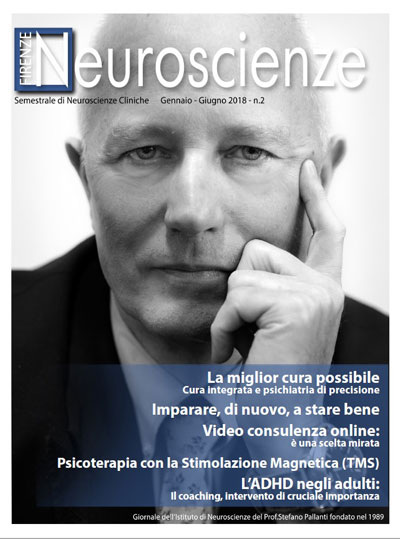Prof. Stefano Pallanti is a member of the Obsessive Compulsive and Related Disorders Network of the European College of Neuropsychopharmacology (ECNP, where he is an Executive Committee Member and a member of the Scientific Committee), a Board Member of the International College of Obsessive Compulsive Spectrum Disorders (ICOCS), UK. He was a member of the OCD spectrum workgroup Impulse Control Disorders Taskforce and International Advisory Board, American Psychiatric Association (APA) for DSM 5.0 (Chair D.J. Kupfer) from May 2005 to May 2007.
Extracted from Incompleteness and Harm Avoidance in OCD Chapter 9, Obsessive-Compulsive Disorder – Phenomenology, Pathophysiology and Treatment, Pallanti S, Barns J, Pittenger C, Eisen, J., Edited by Pittenger C. Oxford University Press, 2017
Abstract
Obsessive-compulsive disorder (OCD) has been traditionally linked with the motivational dimension of Harm avoidance (HA). There is increasing evidence of the involvement a second core dimension, referred to as Incompleteness (INC) or “not just right experiences” (NJRE). Consistent with the latest edition of the Diagnostic and Statistical Manual (DSM-5), the focus of research regarding OCD has shifted from anxiety mechanisms, primarily related to HA, to feelings of discomfort and tension, typical of INC. However, both dimensions seem to differentially contribute to OCD symptomatology, thus representing core features underlying the disorder. In this chapter, the differential roles and neural substrates of both HA and INC will be discussed, together with the consequent theoretical and clinical implications.
Keywords: Obsessive-compulsive disorder; OCD; Harm avoidance; HA; Incompleteness; INC; not just right experiences; NJRE.
Introduction
Obsessive-compulsive disorder (OCD) is markedly heterogeneous in its manifestations. Extensive efforts have been made to categorize this phenomenological heterogeneity using factor analytic approaches (Chapter 8). An alternative approach, which we explore in this chapter, is to examine differences in the motivations that drive maladaptive behaviors in OCD, rather than on the topography of the behaviors themselves.
Prior to the publication of the fifth edition of the Diagnostic and Statistical Manual (DSM-5; American Psychiatric Association [APA], 2013), OCD was categorized as an anxiety disorder. This categorization emphasizes anxiety – or, more specifically, fear-of-harm and harm avoidance (HA) – as the driving force motivating compulsive behaviors. HA is associated with anxious apprehension, worrying, and a desire to prevent potential harm (Summerfeldt et a., 2014); as a personality trait, it is a vulnerability factor for a number of anxiety disorders (Cloninger et al., 2012). Indeed, many patients with OCD are markedly anxious, and standard psychotherapeutic approaches focus primarily on mitigation of this anxiety (Chapter 37).
However, it has long been recognized that many patients with OCD are not motivated primarily by anxiety, but rather by a more inchoate feeling of discomfort or ‘incompleteness’ (INC; Summerfeldt et al., 2014). This recognition is one of the factors that led to the removal of OCD from the anxiety disorders section in DSM-5 and the creation of the new section on Obsessive-Compulsive and Related Disorders (OCRD; see Chapter 49). Incompleteness, also referred to as “not just right experiences” (NJRE), represents an inner sense of imperfection leading to the repetition of certain actions or behaviors until the action or perception conforms to “absolute, yet often inarticulable, subjective criteria” or “standards of rightness” (Summerfeldt et al., 2004). It is more sensory than cognitive and has also been described as “sensory perfectionism” (Frost, Novara, & Rhéaume, 2002; see Chapter 11).
The recognition of a sense of incompleteness as a driver of compulsive behavior is not new. Pierre Janet, in his 1903 Les Obsessions et la Psychasthénie, noted of patients with what we would now call OCD that “…they feel that actions that they perform are incompletely achieved or that they do not produce the sought-for satisfaction.” He also noted “the occasional brief appearance of subline ecstasy,” a profound sense of accomplishment or perfection achieved (perhaps briefly) after successfully completing a compulsion (Pitman, 1987).
Rasmussen and Eisen (1992) conceptualized a sense of incompleteness, which they defined as “an inner drive to have things perfect, absolutely certain, or completely under control,” as one of three core drivers of the urge to perform compulsions in OCD, alongside abnormal risk assessment and pathological doubt (Figure 1). In this framework, various compulsions, such as checking, washing, and ordering, can be understood in relation to one or another of these core dimensions. Importantly, there is not a one-to-one correspondence between the type of compulsion and the underlying driver; for example, an individual may repeatedly check a lock in order to reassure themselves that they are safe, but they may just as well repeatedly check a lock to make sure that it was set in the proper way and feels correct and complete (or both). Similarly, washing may be motivated by a desire to decontaminate or by a need to feel ‘just right’ (Summerfeldt et al., 2004; Calamari et al., 2004; McKay et al., 2004; Ecker & Gönner, 2008).
Figure 1
Other empirical investigations have supported the conclusion that abnormal risk assessment/HA and incompleteness are separable motivations of compulsions (Summerfeldt 2004). For example, Summerfeldt et al (2004) suggest that HA and INC “may in combination underlie most manifestations” of the disorder, with HA showing “marked similarity to other anxiety disorders” and INC being “unique to obsessive-compulsive phenomena”.



